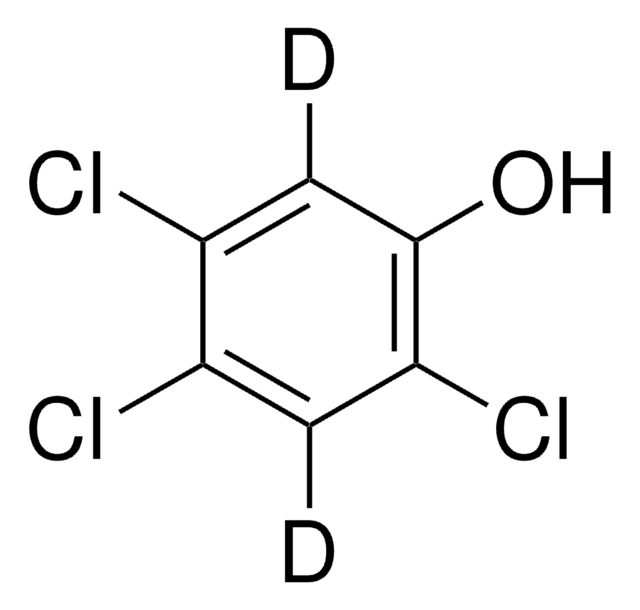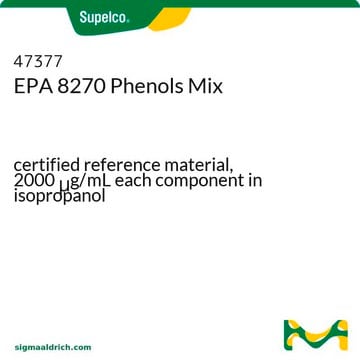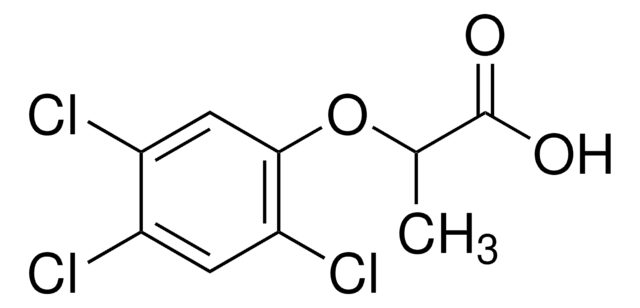36513
2,4,5-Trichlorophenol
PESTANAL®, analytical standard
About This Item
Prodotti consigliati
Grado
analytical standard
Nome Commerciale
PESTANAL®
Durata
limited shelf life, expiry date on the label
tecniche
HPLC: suitable
gas chromatography (GC): suitable
P. ebollizione
248 °C/740 mmHg (lit.)
Punto di fusione
67-69 °C (lit.)
applicazioni
agriculture
environmental
Formato
neat
Stringa SMILE
Oc1cc(Cl)c(Cl)cc1Cl
InChI
1S/C6H3Cl3O/c7-3-1-5(9)6(10)2-4(3)8/h1-2,10H
LHJGJYXLEPZJPM-UHFFFAOYSA-N
Cerchi prodotti simili? Visita Guida al confronto tra prodotti
Categorie correlate
Descrizione generale
Applicazioni
Prodotti consigliati
Note legali
Esclusione di responsabilità
Avvertenze
Warning
Indicazioni di pericolo
Consigli di prudenza
Classi di pericolo
Acute Tox. 4 Oral - Aquatic Acute 1 - Aquatic Chronic 1 - Eye Irrit. 2 - Skin Irrit. 2
Codice della classe di stoccaggio
11 - Combustible Solids
Classe di pericolosità dell'acqua (WGK)
WGK 3
Punto d’infiammabilità (°F)
271.4 °F - closed cup
Punto d’infiammabilità (°C)
133.0 °C - closed cup
Dispositivi di protezione individuale
dust mask type N95 (US), Eyeshields, Gloves
Scegli una delle versioni più recenti:
Certificati d'analisi (COA)
Non trovi la versione di tuo interesse?
Se hai bisogno di una versione specifica, puoi cercare il certificato tramite il numero di lotto.
Possiedi già questo prodotto?
I documenti relativi ai prodotti acquistati recentemente sono disponibili nell’Archivio dei documenti.
Active Filters
Il team dei nostri ricercatori vanta grande esperienza in tutte le aree della ricerca quali Life Science, scienza dei materiali, sintesi chimica, cromatografia, discipline analitiche, ecc..
Contatta l'Assistenza Tecnica.









